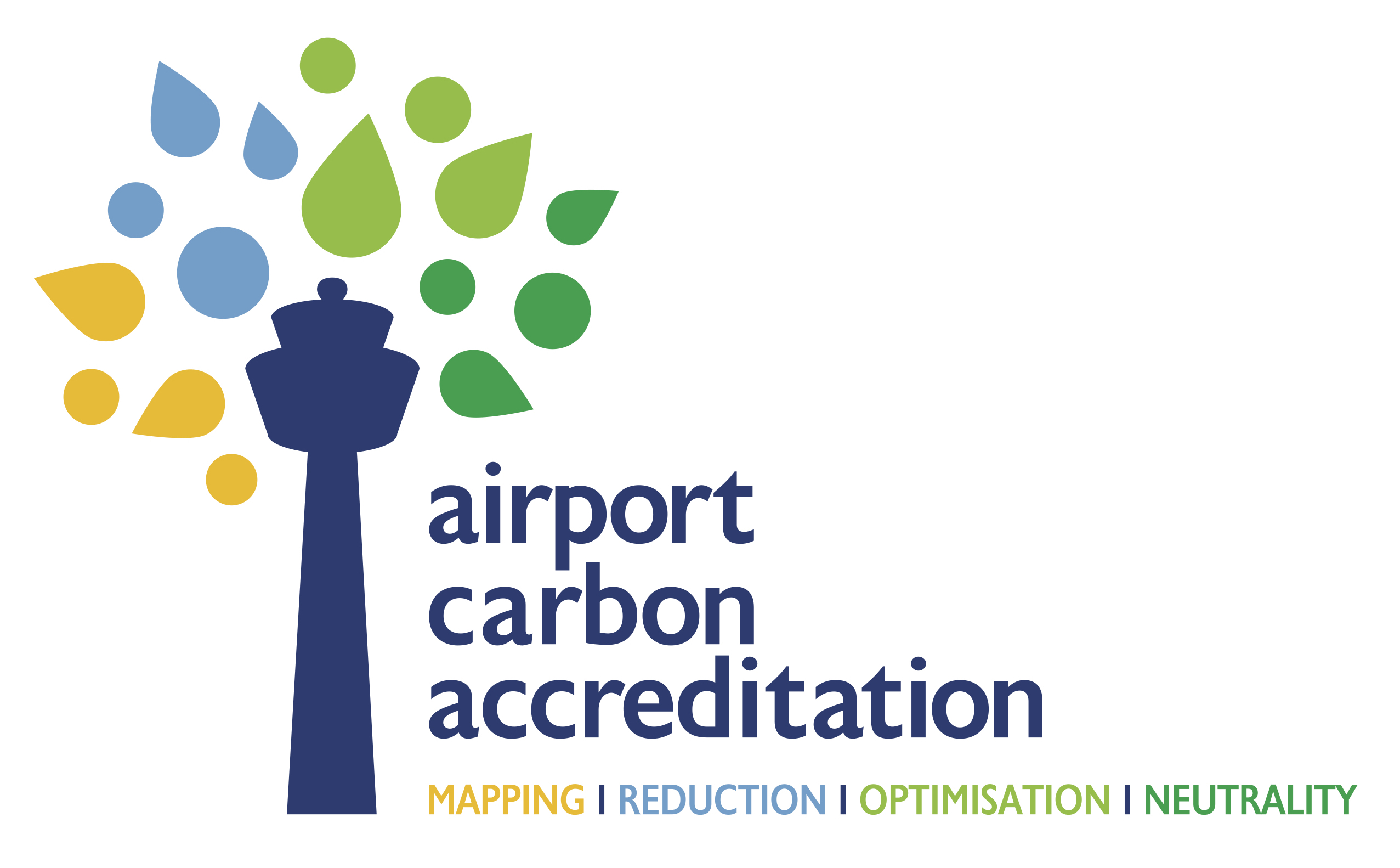Budapest & Amman Queen Alia become carbon neutral
2 May 2018•Budapest is the first carbon neutral airport in Central & Eastern Europe
•Amman Queen Alia becomes the first carbon neutral airport in the Middle East
•39 of the 237 airports in the global Airport Carbon Accreditation programme are carbon neutral – these 39 airports welcomed 8.3% of global air passengers last year.
Following the release last week of the International Transport Forum’s new report “Transport CO2 and the Paris Climate Agreement” urging more action on decarbonising transport, today Airports Council International provides an update on the latest developments among the community of 237 airports in the global carbon management standard, Airport Carbon Accreditation.
In the past week, there have been two big announcements in different ACI regions – in Europe, Hungary’s Budapest Airport reached Level 3+ of the programme, carbon neutrality and in Asia-Pacific, Queen Alia International Airport in Jordan also became carbon neutral. Reaching carbon neutrality under Airport Carbon Accreditation means that an airport has reduced the emissions under its direct control (Scope 1 & 2) as much as it was possible and has offset the remaining residual emissions.
Niclas Svenningsen, who heads the Climate Neutral Now initiative at the United Nations Framework Convention on Climate Change (UNFCCC) Secretariat in Bonn, Germany commented “These latest carbon neutral airports Budapest and Queen Alia provide yet more encouraging news of how a good idea – such as well-structured voluntary climate action by industry – can cross the world and stimulate others to step up to the challenge. Meaningful climate action really depends on that proactive spirit and it is heartening to see how engaged the airport industry is in climate action – specifically to address its own emissions in the equation.”
Budapest Airport is the 30th carbon neutral airport in Europe - an important milestone on the road to delivering the industry’s commitment to have 100 carbon neutral airports in Europe by 2030.
Jost Lammers, CEO of Budapest Airport said “We strive to be forward-looking at Budapest Airport and we bring that to every facet of what we do – from technical operations to communications, from environment to security. I am particularly proud of how engaged the personnel working for the airport have been from our first accreditation at Level 1 in early 2014, through to reducing our CO2, collaborating with other companies on our airport site, all leading up to this achievement today. But rest assured, we remain very motivated – we will keep looking for the next innovations in sustainability.”
Kjeld Binger, CEO of Airport International Group (operator of Queen Alia International) commented, “We at Airport International Group are committed to safeguarding the Airport environment, and ultimately that of the Kingdom as a whole, a fact which makes this milestone achievement all the more impactful. We are pleased to become the first carbon neutral airport in the Middle East and this accomplishment could not have been achieved without our Airport International Group employees, in addition to our business partners and their dedicated staff. Therefore, we extend our sincere gratitude to them for their efforts, which reflect the resolve of the Jordanian people, and of this, we are extraordinarily proud.”
LATEST DEVELOPMENTS
Across the world, there has also been a lot of other developments across the 4 levels of the Airport Carbon Accreditation programme, starting with Europe:
In one big step, 17 airports operated by EDEIS Group became Airport Carbon Accredited: Annecy Airport, Auxerre Airport, Bourges Airport, Castellón Airport, Châlon Champforgeuil Airport, Cherbourg Maupertus Airport, Dijon Bourgogne Airport, Le Havre Octeville Airport, Mayotte Airport, Nîmes Alès Camargue Cévenne Airport, Reims Airport, Saint Martin Grand Case Airport, Tarbes Lourdes Pyrénées Airport, Tours Val de Loire Airport, Troyes Airport, Toulouse Francazal Airport and Vannes Golfe du Morbihan Airport. The arrival of these airports into the programme means that France has now become the country with the highest number of accredited airports worldwide - a total of 39.
Asia-Pacific - In recent months, the Asia-Pacific region has also experienced an impressive surge in new entries and upgrades. A total of 6 new airports joined the ranks of airports addressing their CO2, bringing the total number in the region to 44 airports:
Longreach Airport, Melbourne Airport, Noumea ‘La Tontouta’ Airport and Mount Isa Airport all entered the programme at Level 1 Mapping. Singapore’s Changi Airport made a great return to the programme after a few years of absence, achieving direct accreditation at Level 3 Optimisation. Narita Airport in Japan entered the programme directly at Level 2 Reduction. Sharjah International Airport achieved Level 3 Optimisation for the first time.
Latin America & the Caribbean
In the past 6 months, the number of accredited airports in the Latin America & the Caribbean region has more than doubled, thanks to the successful accreditation of 8 new airports, giving a total participation of 14 airports in the region. 6 of the new entrants are located in the Dominican Republic and are owned by VINCI airports: Puerto Plata, Santo Domingo, Samaná El Catey, La Isabela, María Montez and Arroyo Barril Airports. The two most recent entrants are: Curaçao International Airport and San José International Airport in Costa Rica.
North America
A new airport also recently joined the ranks in the North American region: Québec City Jean Lesage International Airport embarked on its carbon management strategy, entering the programme at Level 1 Mapping. This brings the total number of accredited airports there to 34.
Some airports are moving up through the levels of the programme, as demonstrated by Ottawa Macdonald-Cartier Airport which obtained an early upgrade to Level 2 Reduction. Portland Hillsboro returned to Level 2, rounding up all airports owned by Port of Portland at this level of accreditation.
With 4 different levels of accreditation covering all stages of carbon management (Mapping, Reduction, Optimisation and Neutrality), Airport Carbon Accreditation is independently administered, institutionally-endorsed¹ and has the support of the United Nations Framework Convention on Climate Change (UNFCCC), United Nations Environment Programme (UNEP), the International Civil Aviation Organisation (ICAO), US Federal Aviation Administration and the European Commission (EC).
*****
For all the latest key figures, including details of the accredited airports in each world region, their actions and the difference the programme is making, check out the interactive maps, case studies & programme results on www.AirportCO2.org.
The reduction achieved by European airports during Year 9 (June 2017 to May 2018), will be announced during the 28th ACI EUROPE Annual Assembly, Congress & Exhibition in Brussels in June.


